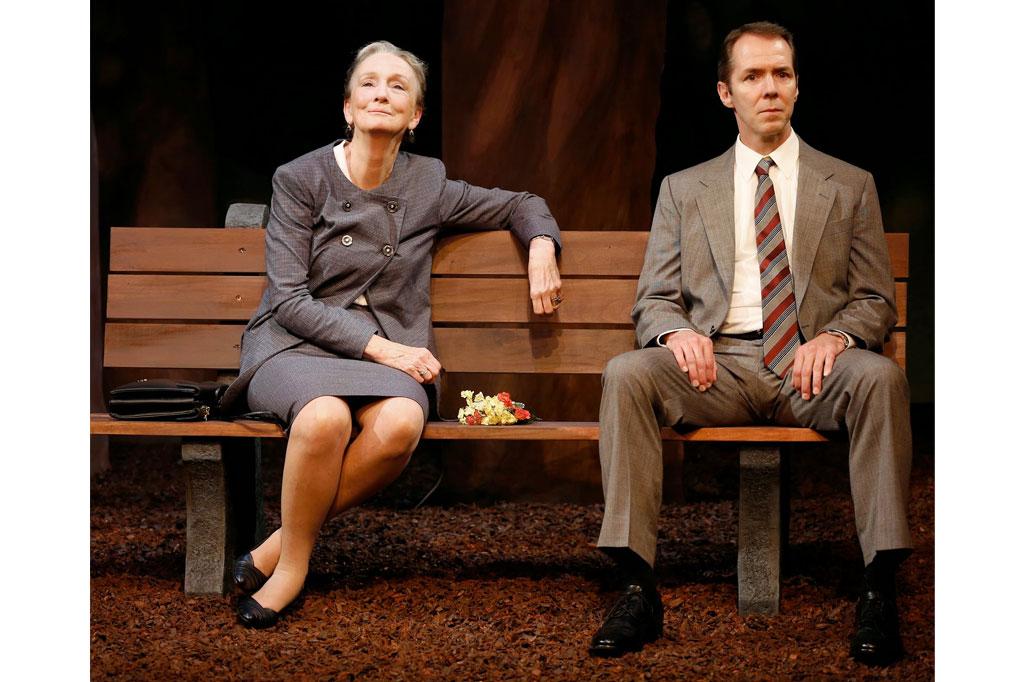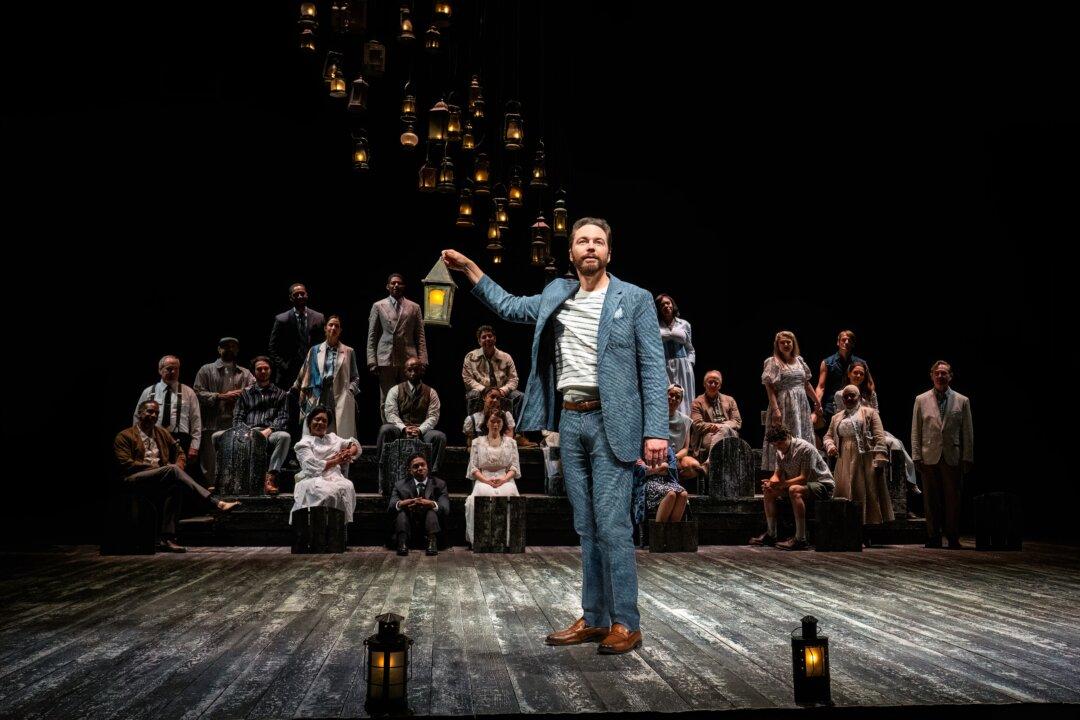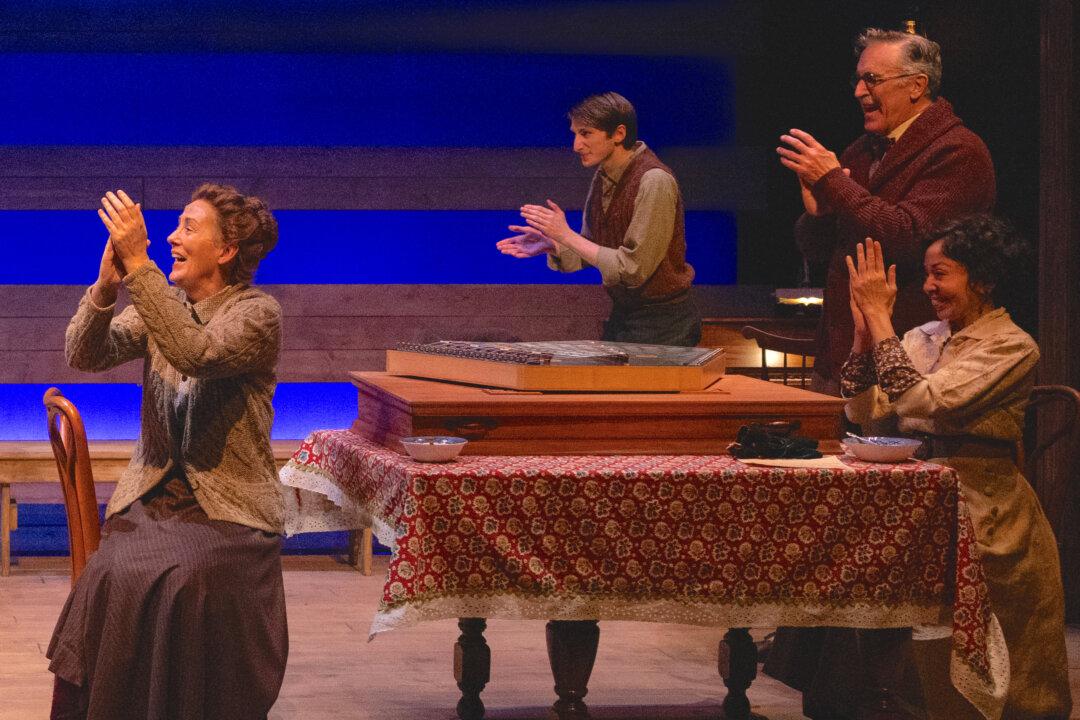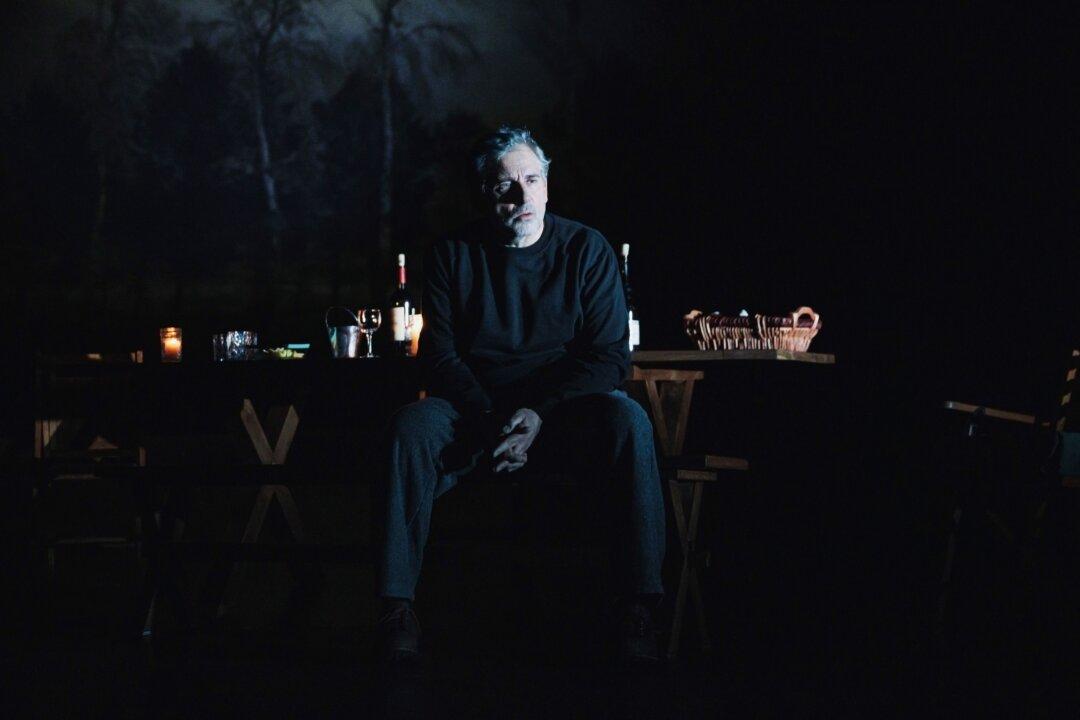NEW YORK—In Lee Blessing’s A Walk in the Woods, two diplomats, one American, the other Russian, are to hold a series of meetings in a pleasant wood on the outskirts of Geneva, far from the stresses of the city.
The bucolic setting is evidenced by the gigantic, abstract trees (designed by Scott Bradley). A simple wooden bench and tree stump complete the picture.
Irina Botvinnik (the formidable Kathleen Chalfant) and her younger American counterpart, John Honeyman (Paul Niebanck) are meeting for the first time. They are here to create a treaty that would please their respective governments and lead to a solution to the nuclear arms race.
Botvinnik has played this game many times before. She makes comments about Honeyman’s predecessor and the former’s stiff approach and tries to soften the proceedings by suggesting that the two become friends. Honeyman rejects this approach; he is all business. Only by sticking to the subject can progress be made.
There is a passage of time. As the seasons go by, we are to view several meetings. At times the issues seem to be brought to a head, and it seems that good progress can be made. But the quietly cynical Botvinnik points out that too good a solution would offend one nation or the other. Neither would want to give credit to the other.
At one point Botvinnik sees a wild rabbit and notes, somewhat sadly, how in her youth she had been able to catch rabbits with her bare hands. She seems to be making the point that when she could rely on only herself for results, she was successful. Honeyman appears to be oblivious to her suggestions and plunges ever forward in his desire for a successful treaty.
Botvinnik suggests that even if a successful treaty is designed, one nation or the other would break its rules, creating a more powerful number of weapons and leading to the need for another treaty in future. The game might go on forever. No wonder then that she believes that the creation of a simple friendship between her and Honeyman might be the best way to spend their time together.
Thus, it seems to be an exercise in futility.
The play is a fictionalized version of an actual meeting that took place between negotiators Paul Nitze and Yuli Kvitsinsky, who took a similar “walk in the woods” during the 1982 Geneva peace talks. Although they came up with their own offer, it was ultimately turned down by both the United States and the Soviet Union.
Under the detailed direction of Keen Company artistic director Jonathan Silverstein, Kathleen Chalfant displays just the right tone and appearance for a Russian negotiator: serious and professional. Paul Niebanck accurately portrays an eager but relatively inexperienced American negotiator.
It’s interesting to note that Lee Blessing originally wrote the play for two male characters. Several companies, however, had requested a change of gender for one of the characters, and Mr. Blessing, in this case, was delighted to be approached with the offer of Kathleen Chalfant as one of the negotiators.
Costume design by Jennifer Paar is right on for both actors, particularly in the case of Ms. Chalfant, whose subtle wardrobe changes accurately indicate a quietly well-dressed professional. Joseph Bradford’s lighting design effectively supports Scott Bradley’s towering trees.
A well-played food-for-thought theater piece.
A Walk in the Woods
The Clurman Theatre at Theatre Row
410 W. 42nd St.
Running Time: 1 hours, 45 minutes
Tickets: 212-239-6200 or telecharge.com
Closes: Oct. 18
Diana Barth publishes New Millennium, an arts publication. For information: [email protected].





